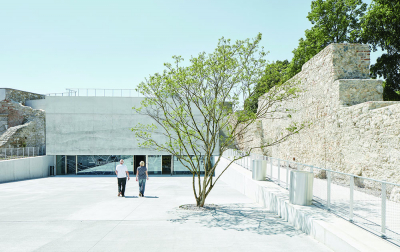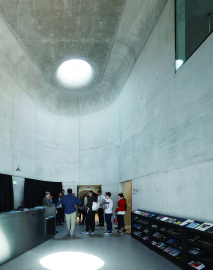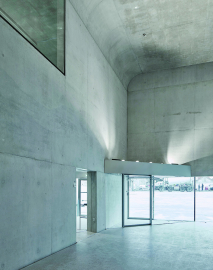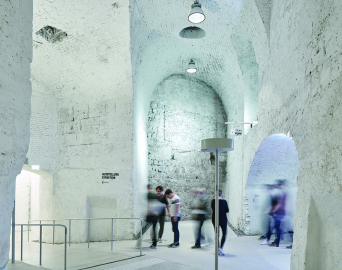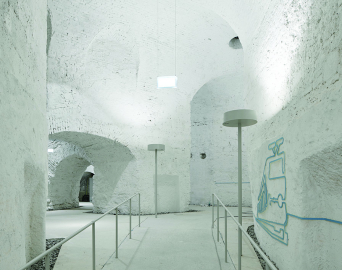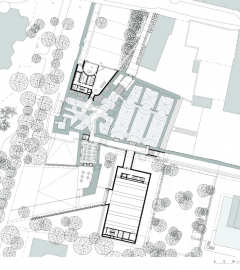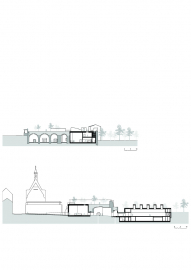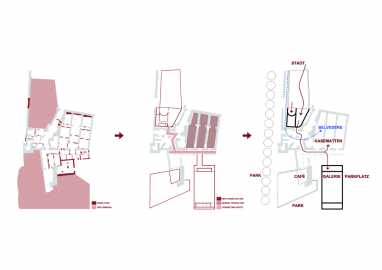New Gallery and Casemates / New Bastion
The project is a result of a competition held in 2016 that set the task of making the casemates, a corner ammunition storage structure of the medieval fortress (continuously altered in the subsequent centuries) accessible to the general public in the form of new cultural centre/exhibition venue for the small city of Wiener Neustadt.
The area in front of the casemates is conceived as a gently sloping public square that connects the level of city to the semi-submerged level of the old structure, receiving visitors with a horizontally glazed ground floor and, above it, a simple, shield-like wall of exposed concrete. The visitor is then led through the maze-like - almost ‘piranesian’ structure of the old casemates, that have been transformed into an exhibition venue for the city.
New multipurpose hall - a kind of Kunsthalle space, lit from above, happens at the end of the subterranean promenade, it provides a natural, contemporary conclusion of the complex.
A gentle slope connects the space of the casemates back to the level of the park, thus finishing the topographical outline of the complex - from the city, through subterranean historical layers of the fortress - back to the surface of the city and the green park.
Positioned on the border between the city centre and the park, the old structure became a mediator between the 2 spatial conditions - that of the dense city fabric, and of the openness of the city park.
The project deals with the issue of reconstruction and integration of historical layers into the life of the city. The operational mode is one of simultaneous ‘revelation' and ‘addition’ - the historical complex, hidden for a long time, can be experienced and understood in its entirety, while accepting new programmatic definition - old and new are clearly distinguished from each other, becoming complementary.
The existing elements are not used simply as a picturesque backdrop for the new functions but the two are combined in such a way that an entirely natural “promenade architecturale” through the spaces from different eras is established, both inside and outside of the new complex.
Through the process of removal of later additions to the original structure, the historical spaces are revealed in all their former spatial strenght - a series of undergroung corridors, connecting the large vaulted storage spaces has been cleaned rather than rebuilt, and consequantly transformed into a coherent whole.
The discipline of intervention is stressed through material definition of additions - the brick world of the historical structure is complemented and revealed through the cast concrete materiality of new additions - making the new and old visibly differ, yet appear united.

